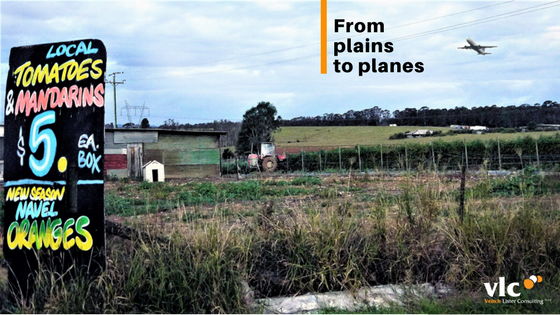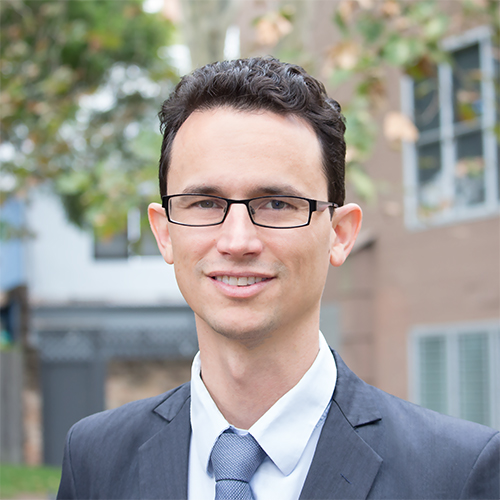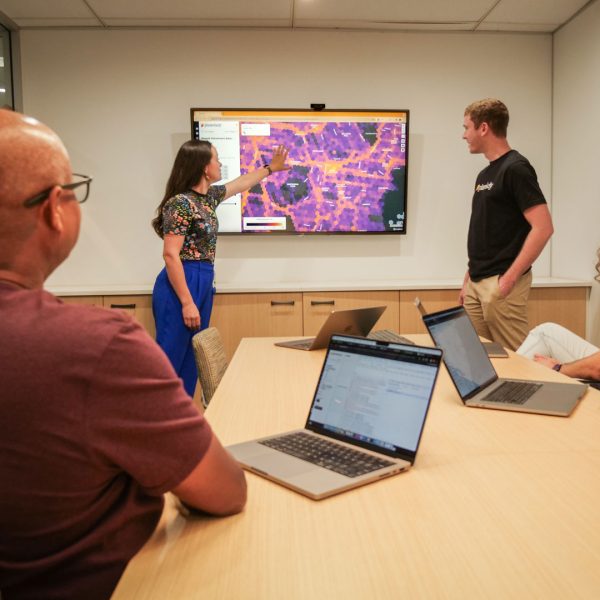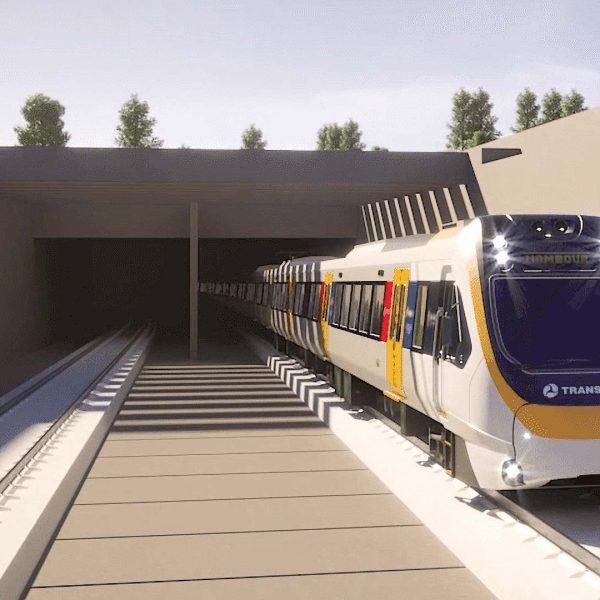
From plains to planes: forecasting travel demands for a city in transformation
27 April 2018
Written by
Up until recently, travel demands of residents at Badgerys Creek were relatively light: perhaps a few farmers taking a van-load of tomatoes to market, or a herd of cows moving from one paddock to the other chasing greener grass.
But change is afoot: to cater for Sydney’s booming population and economy, Badgerys Creek will be converted into Sydney’s second airport and aerotropolis. New neighbours will be moving in, along with high-density apartments, industry, roads, and a major rail line connecting the area to the rest of Greater Sydney.
With such a massive transformation anticipated, how do we predict the travel needs of the new residents, businesses and air passengers? There are two broad approaches: incremental models and absolute models.

Incremental models: data, data and more data
The roll-out of smartcard ticketing (such as Sydney’s Opal) and the uptake of mobile phones tracking our every move captures an unprecedented amount of data on where and how we travel.
This new data can be applied to illustrate current travel patterns and how they evolve day-by-day and hour-by-hour.
The additional time resolution of new data sources also enables predictions about the likely effects of short-term changes to the transport network. An incremental model could predict how people would change to alternative routes or methods of transport if a section of road or rail line closed for the day. This prediction could be made based on similar occurrences in the recent past or on equations describing how people trade off changes in travel times and costs among different travel alternatives.
In such applications, most elements in the scenario are largely the same as today. The local area has the same population, jobs and activities: only a minor aspect (the availability of a link in the transport network) has changed.
But, what happens in the case of a dramatic long-term change, where wholly new transport networks, populations and employment activities are introduced into an area?
For example, even if we knew the exact movements of today’s Badgerys Creek residents, what about the future? Could we pivot from this picture of current cow-related travel to predict how many future aerotropolis residents, businesses and air travellers would take a train rather than cars?
Absolute demand models: diverse customer preferences are central
To truly be able to understand travel behaviour beyond our current situation, we must not only understand when and how people currently travel, but also why.
Perhaps surprisingly, the way different types of people trade off travel time, cost and comfort offered by various travel options remain quite stable across time and across an urban area. And, although there is variation from person to person, within a particular household profile there is a lot of predictability in the types of choices people will take for a given type of trip. For example, a family with two cars and one child faced with a particular set of bus and car travel times is around as likely to choose to drive to work whether they live in Dee Why or Auburn.
Absolute demand models, such as VLC’s Zenith models, take advantage of this stability to forecast people’s reactions to changes, even quite large ones.
Armed with equations to describe behaviour of different market segments and an estimate of the future number of households, jobs, and other activities in different parts of a city, we can make predictions about how many trips people will make across a city, and how these trips will be undertaken.
This approach means that even in an unprecedented situation, such as a massive influx of people and a change from plains to planes, we can predict the travel behaviour associated with new residents and activities with a degree of confidence. Because the model has a deep behavioural underpinning, it will be sensitive to the number and composition of the new population, but also to the transport options offered to people.
Horses for courses?
With a rapidly growing and changing society there are many pressing challenges to address. Appropriate policy responses are needed to issues as diverse as managing the impact from minor road closures through to supporting massive yet sustainable greenfield developments.
The tools needed to inform these diverse policy challenges need to be selected with an awareness of their strengths and limitations. For example:
- Predicting and informing drivers about upcoming road closures clearly requires a tool that can draw on high-frequency traffic movement data that can pick up the typical impacts from similar recent road closures.
- Predicting the total demand from an initiative to increase bus frequencies in an existing bus corridor could be best done by having a clear picture of today’s demand and estimating incrementally what the impact on ridership would be.
However, when a region’s population, activities and proposed transport infrastructure and services are substantially different from today’s, neither short-term models or incremental models are likely to provide reliable forecasts. An absolute model that is built on solid behavioural foundations is likely the best tool for the job.
 
Conclusion
It is tempting to discard tried and tested methods to take advantage of the wealth of new information and emerging modelling techniques. These new approaches could certainly add to the arsenal of tools available, yet they can’t provide all the answers in all situations.
In our view, a combination of absolute and incremental approaches will provide the best insights to help policy makers to confront the major challenges in planning for our cities in both the near-term and long-term.
With innovations in both approaches improving our ability to understand and support our communities, modelling tools will continue to be a sound evidence base to inform policy makers until the cows come home.
Daniel Veryard leads VLC’s transport advisory business in NSW; and Nancye Ng is a Graduate Transport Analyst in the Sydney office.




